The Global Power City Index (GPCI) evaluates and ranks the major cities of the world according to their “magnetism,” i.e. their comprehensive power which allows them to attract creative individuals and business enterprises from every continent and to mobilize their assets in securing economic, social, and environmental development.GPCI evaluates the comprehensive power of forty of the world’s leading cities according to six main functions (Economy, Research and Development, Cultural Interaction, Livability, Environment and Accessibility) representing city strength.
GPCI SUMMARY
content
1. Key Findings of the GPCI-2016
2. GPCI-2016 Methodology
3. Function-Specific Ranking
4. Actor-Specific Ranking
Special Feature: City Perception Survey
More detailed results of research conducted for this ranking are scheduled to be published in January 2017 in the Global Power City Index YEARBOOK 2016.
PRESS RESOURCES
- GPCI 2025
- GPCI 2024
- GPCI 2023
- GPCI 2022
- GPCI 2021
- GPCI 2020
- GPCI 2019
- GPCI 2018
- GPCI 2017
- GPCI 2016
- GPCI 2015
PUBLICATIONS
For more information about the Global Power City Index, please see the Summary or order the YEARBOOK. You can download the PDF version of the Summary below. The YEARBOOK provides specific details on the methods of research, definition of indicators, lists of data sources, and scores and ranking analysis of each city.

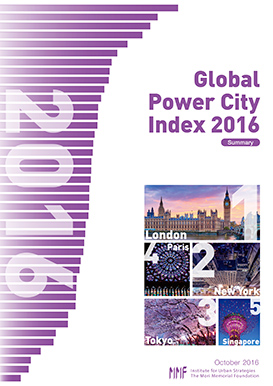
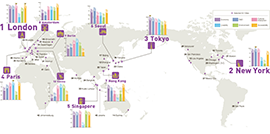

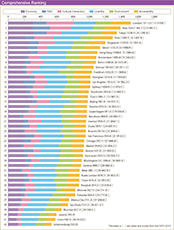
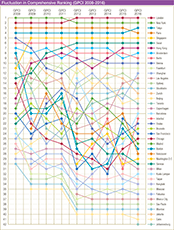



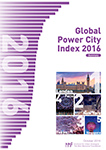
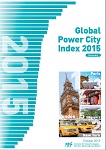
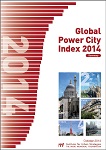
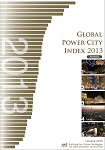
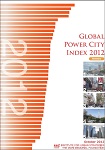

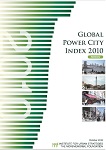
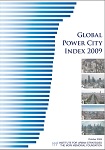
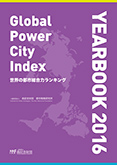
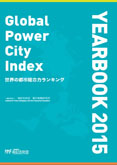
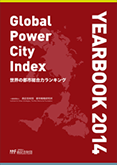

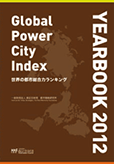
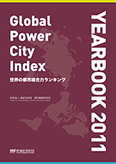
MESSAGES FROM THE COMMITTEE
After holding the 4th place position ever since the Global Power City Index was first presented in 2008, Tokyo has this year favorable achieved 3rd place. This is clearly a favorable sign. In part, these results can be said to arise from the influence of National Strategic Special Zones (NSSZ), while also contributing strongly are the macroeconomic policies related to 'Abenomics' (cheaper yen). Further regulatory reforms should be pursued in order to solidify this 3rd place result, and seek an even higher position as we turn our attention towards the impending Tokyo Olympics. The challenge for Tokyo of realizing a virtuous cycle through various private-sector initiatives, such as the 28 projects in the NSSZ, has just begun.
Heizo Takenaka
Professor, Toyo University
Professor Emeritus, Keio University
Chairman, Institute for Urban Strategies,
The Mori Memorial Foundation
After first being published in 2008 by the Mori Memorial Foundation's Institute for Urban Strategies, the Global Power City Index is now entering its 9th year. While the top 4 cities have not changed since 2008, this year Tokyo has favorable overtaken Paris to claim the 3rd position. With the 2020 Olympic and Paralympic Games being held here in Tokyo and drawing the world's attention, the redevelopment of Tokyo's city center is accelerating. Beginning with Toranomon, Shinagawa, and Shibuya, and continuing with the area around Tokyo Station, an increasing number of large-scale projects will be successively completed. Furthermore, due to inbound visitor policies and the expansion of departures and arrivals at international airports, the city's power is expected to continue to improve. London still maintains its top position, but with the United Kingdom's withdrawal from the EU (Brexit), it is unclear how London's city power will be affected. By overcoming its weaknesses through government policies, Tokyo can aim for the top spot.
Hiroo Ichikawa
Professor and Dean, Professional Graduate School of Governance Studies, Meiji University
Executive Director, The Mori Memorial Foundation
COMMENTS FROM URBAN EXPERTS
This research shows that despite the recent vote to leave the EU, London is the best place in the world to do business. From start-ups to global enterprises across all industries and sectors, the capital offers the ideal environment for businesses to thrive. I am working with London’s business community to ensure their needs are met as we leave the EU and that our great city maintains its global position.
Sadiq Khan
Mayor of London
I am delighted that Tokyo is again recognized as one of the world’s leading cities in terms of overall strength. This reflects Tokyo’s many favorable attributes, including advanced technology, huge knowledge base, clean urban air and water, and world-famous safety. Going forward, I strongly believe Tokyo has the potential to enhance its overall strength even further by addressing key challenges, such as the declining birthrate and aging population, natural disaster preparation and global warming.
As the new governor, I am determined to lead Tokyo toward becoming a “safe city” where people feel confident and secure; a “diverse city” where every citizen can succeed regardless of gender, age, ethnicity or disability; and a “smart city” that is open to the world and a leader in environmental and financial technologies.
As we turn toward the Tokyo 2020 Olympic and Paralympic Games and beyond, we look forward to demonstrating to the world that Tokyo is indeed the best city to live and work in, as well as to visit.
Yuriko Koike
Governor of Tokyo
Seoul is a uniquely diverse, charming and dynamic city for which you cannot find replacement anywhere in the world. It is also a city where history dating back 2,000 years is squarely balanced with the modernity of the contemporary world. Its highly-qualified human resources and cutting-edge technology are second to none. Over the past five years, I have been dedicated to promoting the merits and beauty of Seoul to the rest of the world while striving to make it a more livable city. The fact that Seoul has maintained 6th place in the Comprehensive Ranking of the GPCI, a highly-regarded global urban index, is a testament to the tremendous efforts I have put in. I believe when Seoulites find their city livable, Seoul can successfully attract visitors from around the world. Seoul’s significant improvement in terms of Livability in 2016 powerfully illustrates the positive effects of the city’s labor, housing and safety policies where people are placed at the center. Seoul will never cease to innovate and transform itself. In its journey for betterment, the GPCI findings will serve as a guiding star and valuable reference for our city’s policy-making.
Park Won-Soon
Mayor of Seoul
Amsterdam is more and more becoming the global business hub that fits its characteristics. With over 180 nationalities living in the Amsterdam Metropolitan Area, it is no wonder that Amsterdammers are known for their tolerance and their ability to speak multiple languages.
We know what it takes to keep the city workable, livable and lovable: a high quality educational system, efficient infrastructure, a reliable cooperative government and a strong focus on innovation. And over 100 kilometers of canal with 1500 bridges, 100 museums and 30 parks certainly help to keep the city an attractive place to live, work and play. These are all reasons why the number of international companies and startups grows year on year.
Amsterdam is working hard on the development of houses and international schools to host the steady growth of (international) inhabitants. The biggest challenge now for Amsterdam is to keep its unique balance between being one of the most attractive cities to live in, to work in and to visit.
We highly appreciate that the Institute for Urban Strategies is taking the lead in researching worldwide city development and using their knowledge to help cities with their urban challenges.
Eberhard van der Laan
Mayor of Amsterdam
I have visited dozens of wonderful cities around the world both on business and in private, and Tokyo strikes me as one of the greatest—a jewel in Japan’s crown. It encapsulates the best of Japan’s many tangible and intangible qualities, in everything from safety and cleanliness to hospitality and educational standards.
But Tokyo is not without its flaws. The reality is that the city’s presence and promotion on the global stage is weaker than one would expect, and it has only a limited pool of people capable of contributing at the highest level in the international arena.
I believe that for Tokyo to become a stronger force as a metropolis it needs to become more open and increase its engagement with the world. By actively welcoming different cultures and stimulating innovation, Tokyo can promote an even greater appeal to audiences worldwide.
Rather than waiting for external pressure to bring about change, we need to transform our thinking and act on our own initiative. This, surely, is the key to unlocking the potential of Tokyo.
Masao Torii
President and Representative Director Novartis Holding Japan K.K.
New York City's consistently strong ranking in the GPCI is a result of several factors. The City's vibrant cultural life, robust economic sector, commitment to research and development, especially in the technology sector, relative security from terrorism, and livability all place it at the forefront of major cities around the world. The recent opening of the new Whitney, the expansion of The Museum of Modern Art, and the ongoing investments in the City's other major museums will ensure that New York remains one of the major artistic centers in the world. Extensive new residential projects around the City, often designed by internationally renowned architects, and the development of Hudson Yards on Manhattan's far west side mean that there will be a substantial increase in housing stock over the coming years that will only add to the City's quality of life.
Glenn D. Lowry
Director, The Museum of Modern Art